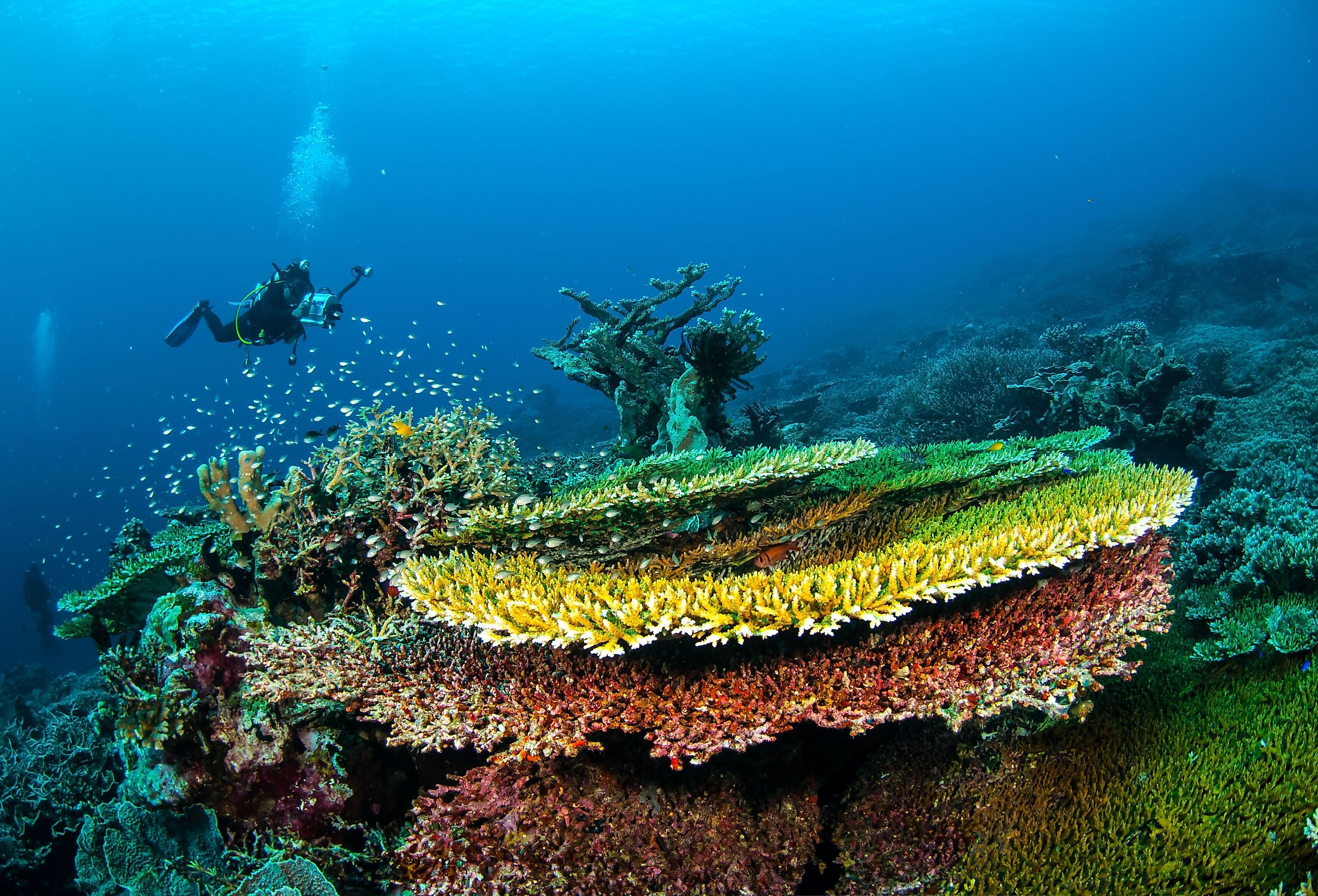
Banda Sea
Nestled along the Muluku Islands of Indonesia, the Banda Sea is a crystal-clear water body famous for tourism activities. It is flush with everything from beautiful coral reefs to lovely islands, some of which have active volcanoes! So, it is the perfect place to enjoy a picturesque time during a trip to the lovely Muluku Islands. Apart from this, the Banda Sea is part of the South Pacific Ocean and has a total area of 180,000 square miles (470,000 square kilometers). Spanning hundreds of miles in length, various coral reefs border the sea, making it a lovely place to visit. However, what truly makes this sea unique is the geological features beneath the surface which give way to immense depths.
Location and Geography Of The Banda Sea
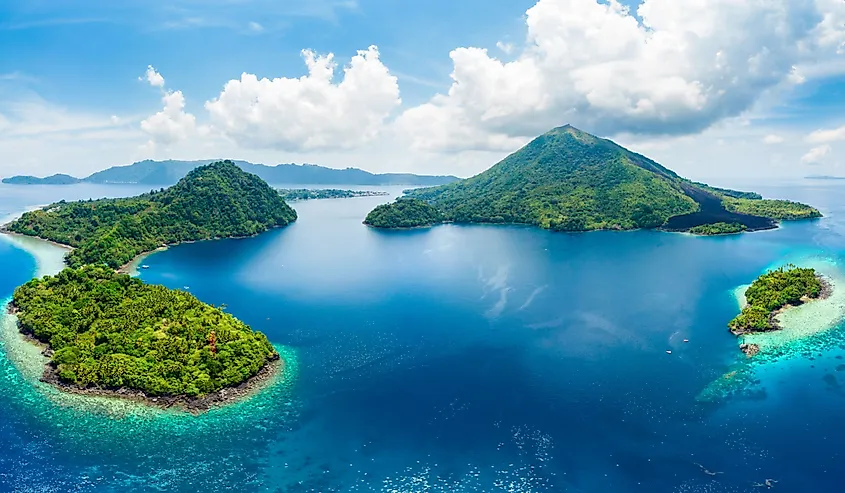
The Banda Sea is in the western South Pacific Ocean just south of the Muluku Islands of Indonesia. Nestled within an arc of islands, the sea’s surface primarily consists of water and has minimal areas of land. In total, the Banda Sea has an expansive surface area of 180,000 square miles (470,000 square kilometers). This area covers a greater latitudinal distance with a maximum length of 620 miles (1,000 kilometers), while the maximum width is exactly half at 310 miles (500 kilometers). Apart from the sea itself, the surrounding area includes an arc of islands and bodies of water. These islands primarily consist of the Lease Islands, Kai Islands, and Barat Daya Islands while the surrounding water consists of four other seas; Moluca Sea, Flores Sea, Ceram Sea, and Savu Sea.
Exploration and Depth of the Banda Sea
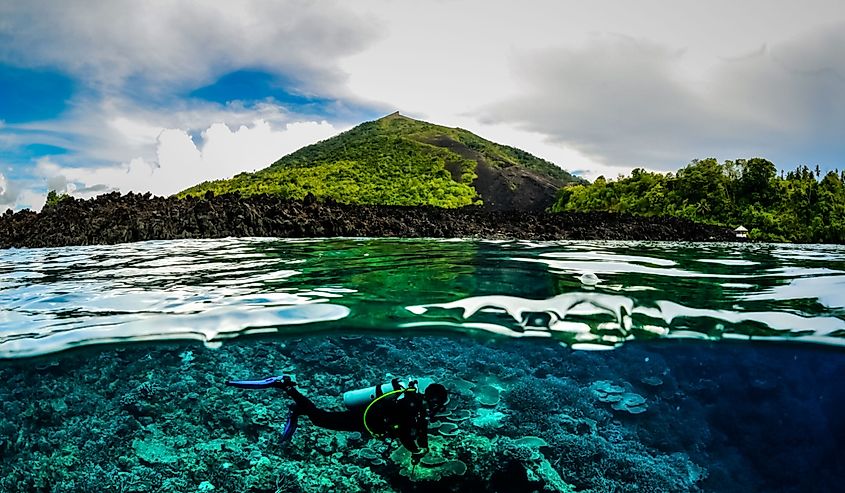
Up until the 1900s, the Banda Sea was primarily unmapped, and little was known about its size, as well as what lay beneath the surface. It was during the Dutch colonial rule in the 1920s that the first explorers set out into the Banda Sea. According to reports, the first expedition occurred with the HMS Willebrord Snellius military vessel and used an echo sounder to map the sea’s floor. This revealed the true depth of the sea and was shocking for explorers at the time.
This is because the Banda Sea has a notable depth of 23,600 feet (7,200 meters). This is significantly greater than the average ocean depth of 12,100 feet (3,688 meters) and is one of the key characteristics of the Banda Sea. It also houses Earth’s deepest underwater exposed fault, The Weber Deep. This oceanic abyss has an immense depth of 4.47 miles (7.2 kilometers) and is the deepest known oceanic place on planet Earth where there is no trench. It has unique geological features with scars along the seabed that scientists propose developed due to a rip in the ocean bed. Even today, researchers are unsure of how the Weber Deep became so deep.
Tourism Activities In The Banda Sea
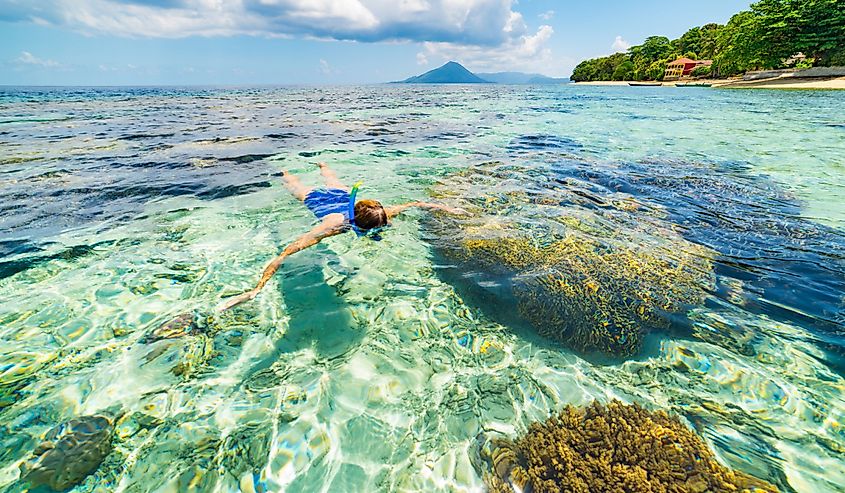
The combination of crystal clear waters and beautiful waterside islands make for the perfect location for tourism and recreational activities. Testament to this, you can enjoy everything from swimming along the coral reefs to climbing large summits in one of the many Banda Islands. When it comes to water-side activities, the Banda Sea’s coral reefs are one of the prime attractions in the region. Frequented by tourists, you can spend the day snorkeling at one of the 30+ dive sites spread throughout the Banda Islands. These sites are very remote and home to a wide range of marine life such as pilot whales, and pygmy seahorses, as well as beautiful expanses of living coral reefs. While snorkeling is often considered the most beautiful and serene experience, you can also spend your day relaxing along one of the island’s beaches or swimming along the shore.
The Banda Sea area is also home to many sights and activities on land. For example, the island of Banda Api is home to a 2,100-foot (640 meters) tall volcano that offers a complete hiking route for tourists to explore. This trek incorporates stunning views, climbing, and treacherous hiking for a once-in-a-lifetime experience. All in all, whether you enjoy diving, lounging, hiking, or just natural sights, you can visit the Banda Sea.
Climate Of The Banda Sea
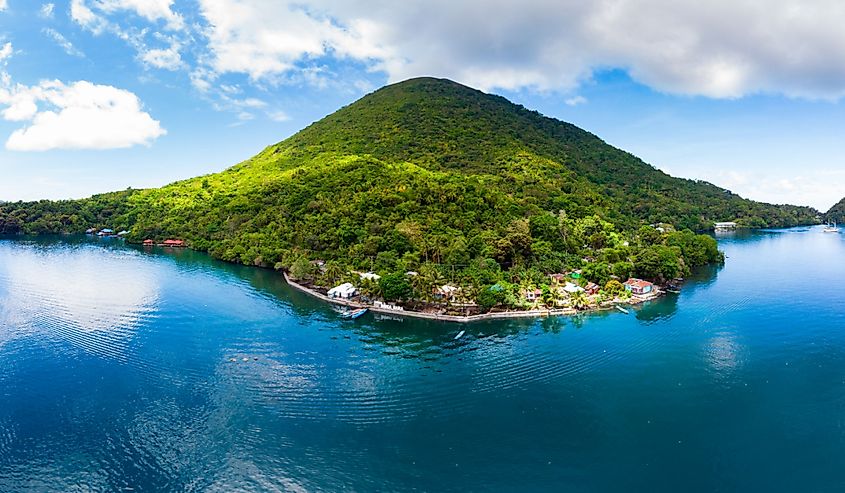
Adding to its natural beauty, the Banda Sea is also known for having a pleasant and warm climate year-round. Based on figures from the nearby Banda Islands, and according to the Koppen Climate Classification, the region is a Tropical Rainforest Climate. This indicates high temperatures throughout the year with high precipitation and no significant winter season. Testament to this, temperatures range from average highs of 84°F to average lows of 65°F year-round. However, while temperatures may be high, the region is often cloud covered with most months seeing between 75%-90% cloudy days. Thanks to this combination, the Banda Sea has a unique warm yet comfortable environment that is suitable for outdoor activities. When it comes to precipitation, the Banda Sea gets an average of 125 rainy days, out of which the majority is in February with a median of 6.9 inches of rainfall.
Geology Of The Banda Sea
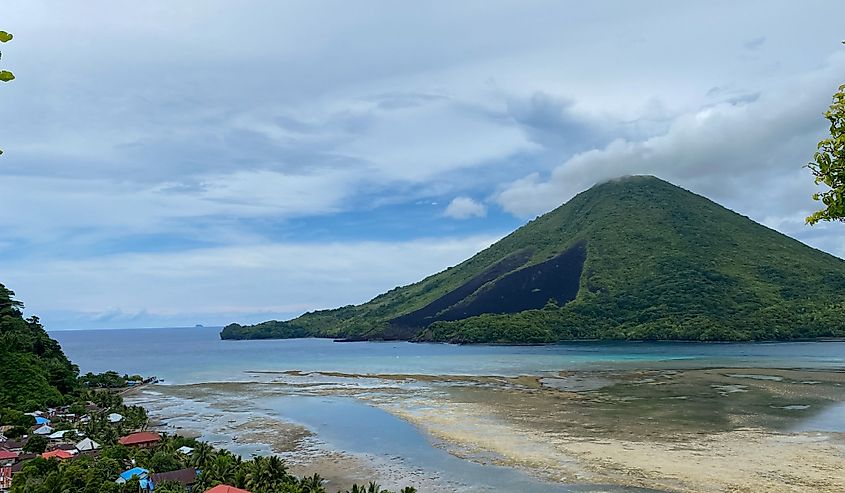
In addition to its depth, another unique feature of the Banda Sea is its geological structure and the Banda Sea Plate. This is because the Banda arc has a unique 180° curvature which scientists assume is due to the collision of the Australian continental margin and a volcanic arc. Moreover, the sea sits at the confluence of three major tectonic plates, the Eurasian, Pacific, and Indo-Australian plates. Due to this, it is an earthquake-prone zone and in the past century, there have been at least three major earthquakes in the sea. Apart from these major plates, the Banda Sea Plate is beneath the majority of the Banda Sea, bordered by multiple island arcs in the southern regions. According to scientists, it is due to this immense geological activity that the Banda Sea has unique depths and formations such as the Weber Deep.
Flora and Fauna In The Banda Sea
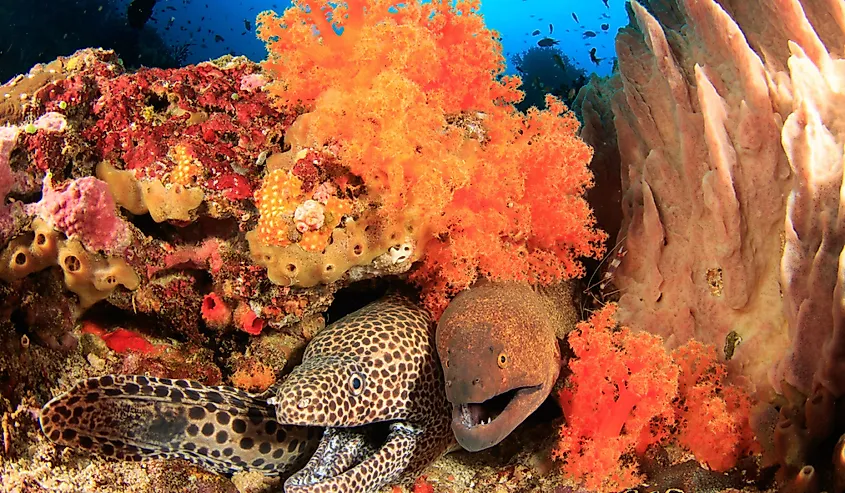
Thanks to its tropical climate and immense depth, the Banda Sea is an ideal habitat for many species of flora and fauna. Moreover, the surrounding islands provide a beneficial variation between the depth and environment which makes the sea suitable for both large and small animals. In particular, the Banda Sea is home to many large animal species such as mantas, sharks, and several species of whales. Along with this, you can find large schools of dolphins and tuna throughout the sea. Bolstered by the region's strong currents, the sea also houses smaller marine animals such as seahorses, frogfishes, and mandarin fish.
Apart from marine animal life, plant life is also plentiful and stunning in the sea. Specifically, the Banda Sea’s surrounding island shores are home to nearly 400 species of coral with immense habitat diversity. This not only promotes animal life but is also one of the reasons that the Banda Sea is famous for tourism. Additionally, coral life in the region has increased in the past few decades thanks to conservation and promotion from local bodies.
Conclusion
Whether it is natural beauty, enjoyable activities, or even mysterious depths, the Banda Sea has it all. You can travel here with friends or family to enjoy coral reef snorkeling, swimming, or volcanic hiking. Even with all of its beauty, the Banda Sea is home to unique geological features such as the famous and mysterious Weber Deep. So, if you plan on visiting Indonesia anytime soon, be sure to check out the beautiful Banda Sea and all it has to offer!











